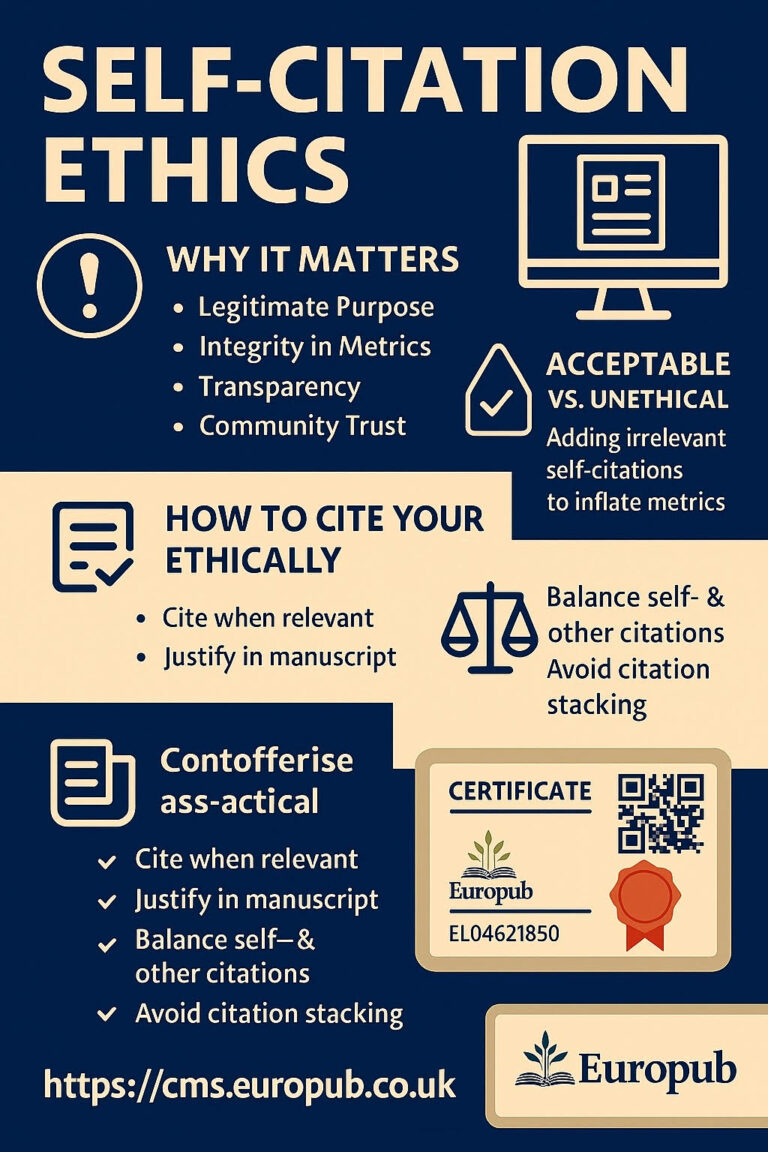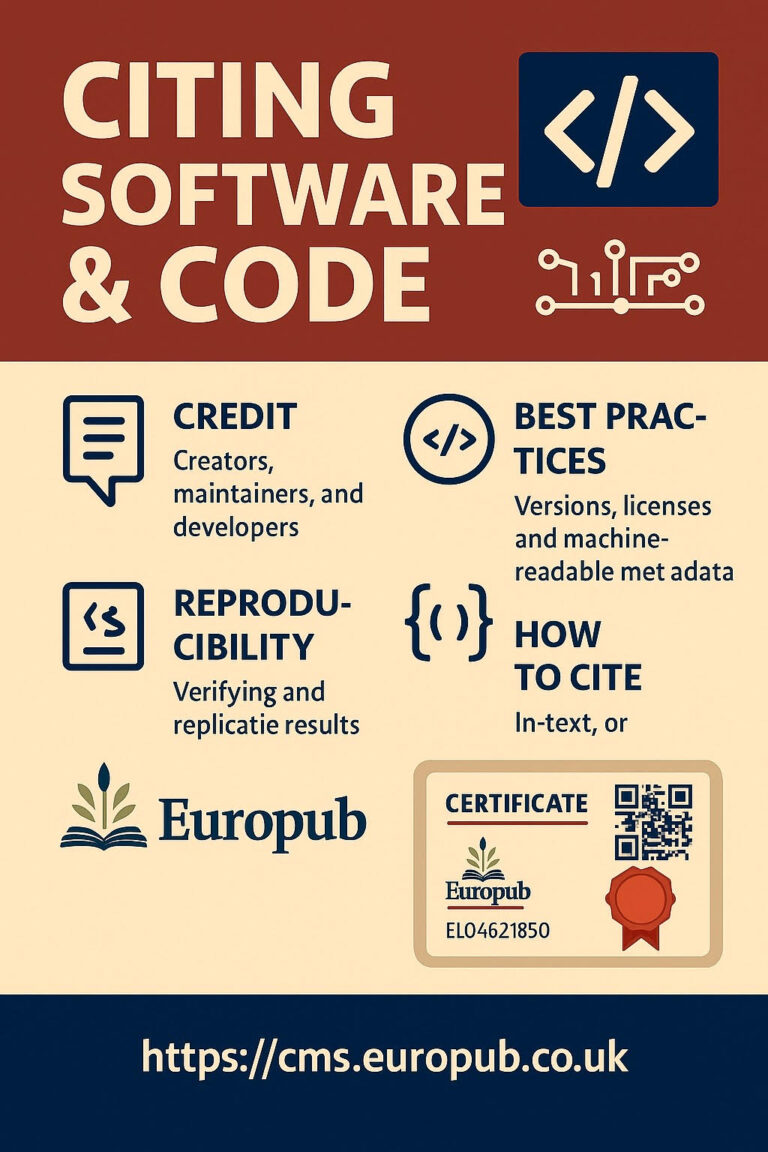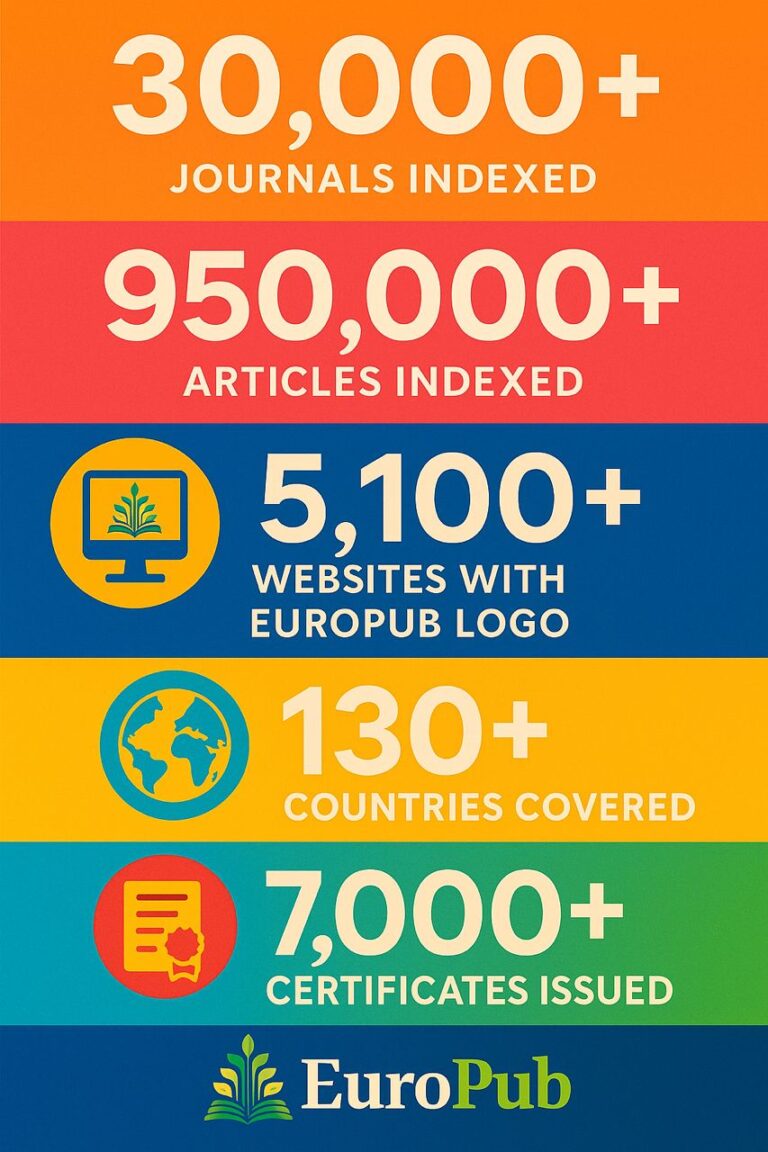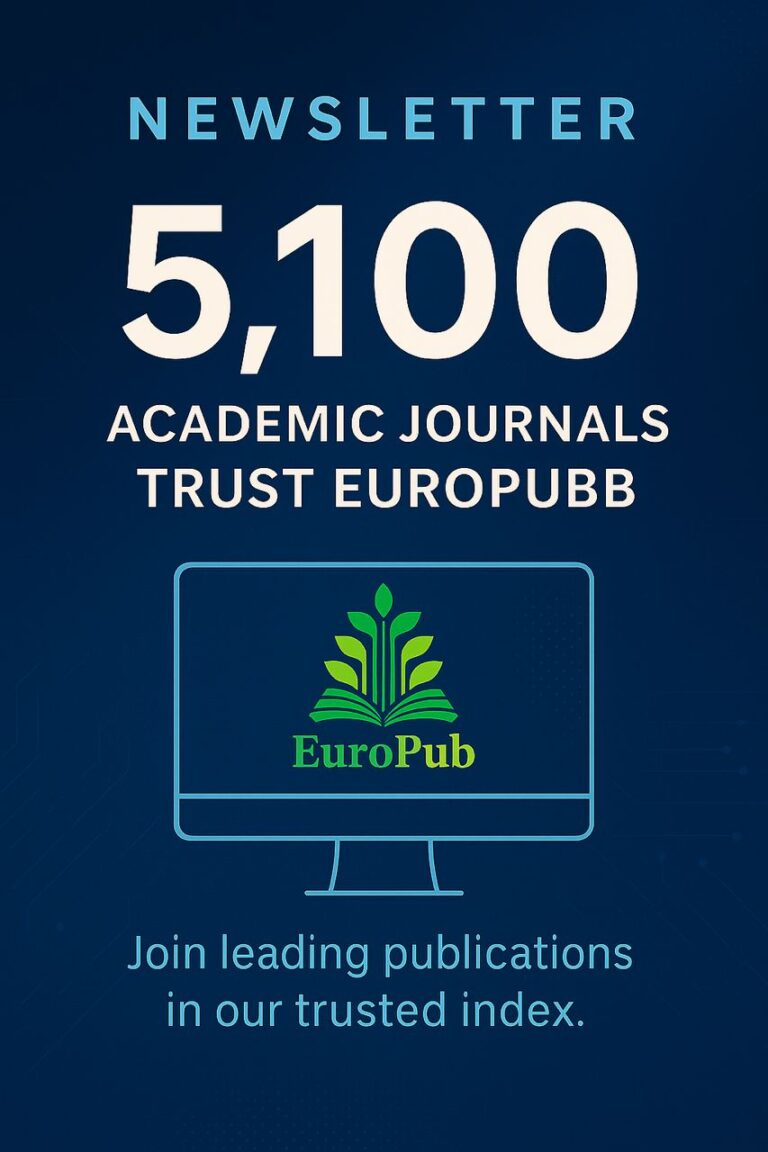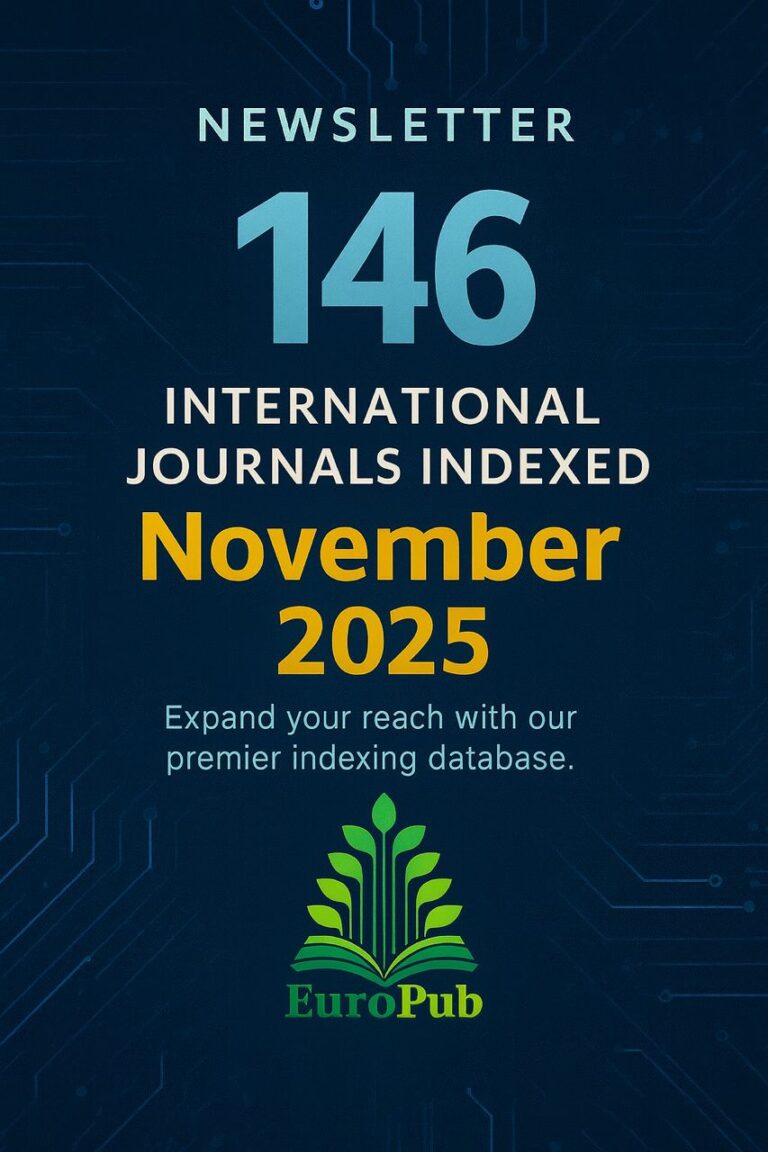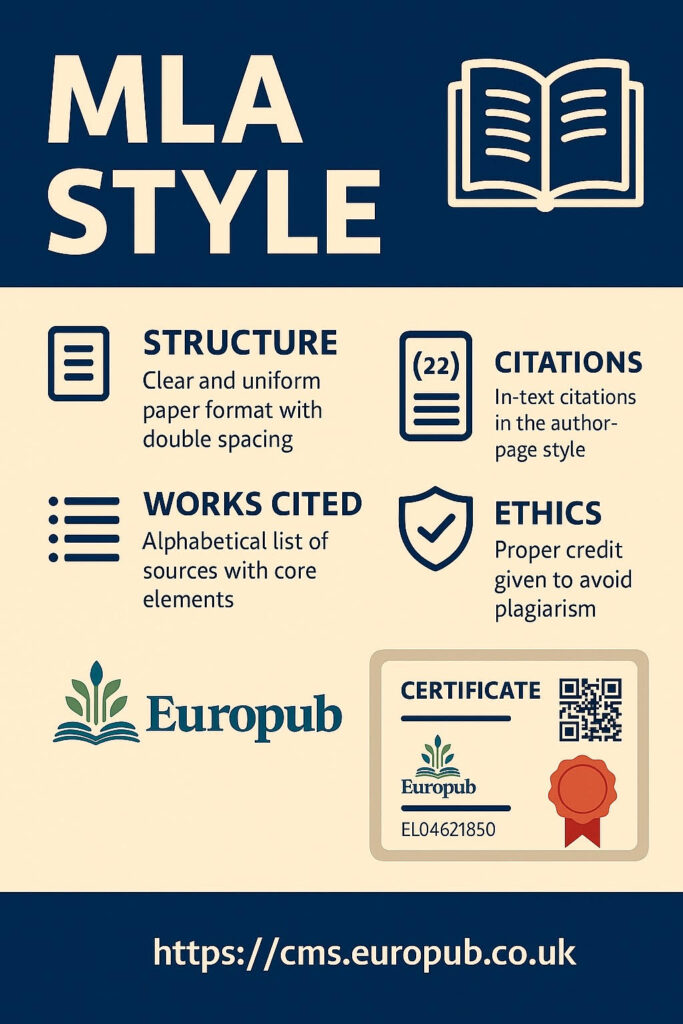
 Overview
Overview
MLA Style (Modern Language Association) is one of the most widely used referencing and formatting systems in academia — especially in the humanities, including literature, language, cultural studies, and philosophy.
It focuses on clarity, consistency, and crediting original authors properly using a simple author–page citation method.
MLA’s goal is to make papers easy to read, professionally formatted, and free of plagiarism, while maintaining flexibility across disciplines.
 Structure of an MLA Paper
Structure of an MLA Paper
| Section | Key Requirements |
|---|---|
| Font | Times New Roman, 12 pt |
| Line spacing | Double-spaced throughout |
| Margins | 1 inch (2.54 cm) on all sides |
| Header | Author’s last name + page number (top-right corner) |
| Title page | Not required — begin with your name, instructor, course, and date |
| Text alignment | Left-aligned, no justification |
| Paragraph indent | 0.5 inches for the first line |
| Quotation format | Block quotes for text over 4 lines |
| Citation style | Author–page format → (Smith 22) |
| Reference list title | “Works Cited” centered at the top of a new page |
 In-text Citation Examples
In-text Citation Examples
| Type | Example |
|---|---|
| Single author | (Johnson 45) |
| Two authors | (Williams and Brown 132) |
| Three or more authors | (Taylor et al. 59) |
| Corporate author | (World Health Organization 12) |
| No author | (“Global Climate” 8) |
| Multiple works by same author | (Miller, Human Nature 91) |
| Quoting indirect source | (qtd. in Adams 77) |
 Works Cited Page Examples
Works Cited Page Examples
| Source Type | Example |
|---|---|
| Book (1 author) | Morrison, Toni. Beloved. Vintage, 2004. |
| Book (2 authors) | Dorris, Michael, and Louise Erdrich. The Crown of Columbus. HarperCollins, 1991. |
| Edited book | Harris, Charles, editor. Critical Essays on Native American Literature. G.K. Hall, 1987. |
| Journal article | Lopez, Ana. “Postmodern Poetics.” Modern Language Review, vol. 85, no. 4, 2021, pp. 441–456. |
| Website | “MLA Style Center.” Modern Language Association, 2024, style.mla.org. |
| YouTube Video | TED. “The Power of Words.” YouTube, 10 Mar. 2022, www.youtube.com/watch?v=xyz. |
| Online PDF | Bloom, Harold. Shakespeare: The Invention of the Human. PDF file, Yale University Press, 2019. |
 Major Differences Between MLA and Other Styles
Major Differences Between MLA and Other Styles
| MLA | APA | Chicago | |
|---|---|---|---|
| In-text | Author–page | Author–year | Footnote/endnote |
| Title page | Not required | Required | Optional |
| Works list title | Works Cited | References | Bibliography |
| Common fields | Literature, Arts | Psychology, Social Sciences | History, Law |
 How to Format Quotations
How to Format Quotations
- Short quotations:Integrated in text with quotation marks → “Art is long” (Keats 4).
- Long quotations:Indented one inch from the left margin, no quotation marks, followed by the parenthetical citation.
 MLA Core Elements (9th Edition)
MLA Core Elements (9th Edition)
- Author.
- Title of source.
- Title of container.
- Other contributors.
- Version.
- Number.
- Publisher.
- Publication date.
- Location (pages, URL, DOI, etc.).
Example:
Lopez, Ana. “Modern Drama and Reality.” Cambridge Journal of Literature, vol. 12, no. 4, 2022, pp. 199–210. Cambridge UP. DOI: 10.12345/cjl.2022.199.
 Ethical Use and Avoiding Plagiarism
Ethical Use and Avoiding Plagiarism
- Always cite every paraphrase, summary, or quotation.
- Use plagiarism detection tools before submission.
- Maintain a consistent Works Cited format for transparency.
 Recommended Resources
Recommended Resources
 FAQ — MLA Style (Comprehensive)
FAQ — MLA Style (Comprehensive)
General Formatting
Q1: What is the current edition of MLA?
A: The 9th edition (2021) is the latest and most widely adopted.
Q2: Is MLA used globally?
A: Yes, it’s the standard in most humanities journals and universities.
Q3: Do I need a title page?
A: No, MLA doesn’t require one unless specified by your institution.
Q4: Can I use footnotes in MLA?
A: Yes, but sparingly — mainly for extra context or commentary, not citations.
In-text Citations
Q5: What if there is no author?
A: Use a shortened title instead, e.g., (“Global Warming” 45).
Q6: How do I cite multiple pages?
A: (Smith 34–37).
Q7: How do I cite two works by the same author?
A: Add the shortened title → (Johnson, Modern Poetry 88).
Q8: Can I cite two sources in one parenthesis?
A: Yes: (Jones 44; Miller 22).
Q9: Should I include publication year in-text?
A: No, MLA does not use years in parentheses.
Works Cited
Q10: How should titles be formatted?
A: Italicize larger works (books, films); use quotation marks for shorter ones (articles, poems).
Q11: How do I alphabetize Works Cited?
A: By the author’s last name; if none, by title (ignore “A,” “An,” “The”).
Q12: Can I include URLs?
A: Yes, always include the stable URL or DOI.
Q13: Should I add access dates?
A: Optional, but recommended for online sources that may change.
Q14: How do I cite translated works?
A: Include the translator’s name after the title: The Stranger. Translated by Matthew Ward, Vintage, 1989.
Special Cases
Q15: How do I cite a YouTube video?
A: “Title of Video.” YouTube, uploaded by [Channel Name], Date, URL.
Q16: How do I cite a podcast episode?
A: “Episode Title.” Podcast Name, hosted by [Host], Season, Episode, Publisher, Date, URL.
Q17: How do I cite government documents?
A: Include agency as author and publication details.
Q18: How do I cite personal communication (emails, interviews)?
A: These are cited in-text only, not in the Works Cited list.
Academic & Ethical Use
Q19: What happens if I forget a citation?
A: It may be considered plagiarism; always double-check.
Q20: Can I use MLA for journal submissions?
A: Yes, especially for literary and humanities journals indexed in Europub.
Q21: Is there an MLA citation generator?
A: Yes, MLA.org provides an official tool, and others like Zotero or Mendeley support it.
Technical & Submission-Ready
Q22: How to convert APA to MLA?
A: Adjust author-year to author-page and rename “References” to “Works Cited.”
Q23: What if my software (Word, LaTeX) has different templates?
A: Always verify settings with MLA 9th edition guidelines.
Q24: How to format DOI links?
A: Use https://doi.org/ prefix, not “DOI:”
Q25: Can I include images or figures?
A: Yes, label them as “Figure 1,” “Figure 2,” etc., with a short descriptive caption.
For Students & Journals
Q26: Does Europub accept MLA submissions?
A: Yes, Europub journals allow MLA formatting for literature, language, and cultural fields.
Q27: Can I use MLA in research certificates or reports?
A: Yes, Europub’s Certificate Management System supports MLA-style metadata for author identification.
Created for Europub Publishing Company Ltd. UK
Source Verification & Certificate Platform:  https://cms.europub.co.uk
https://cms.europub.co.uk
